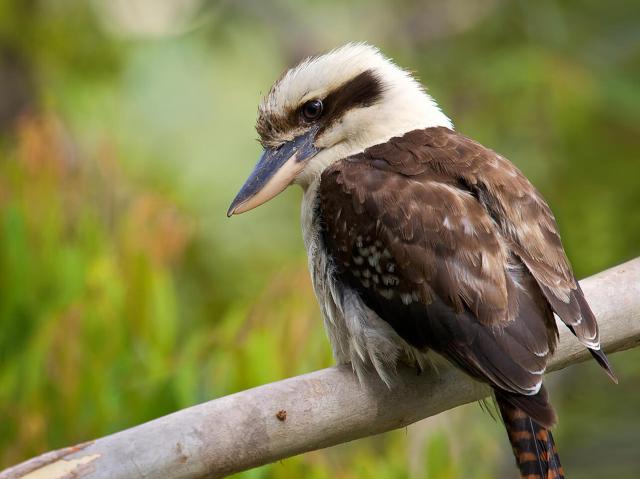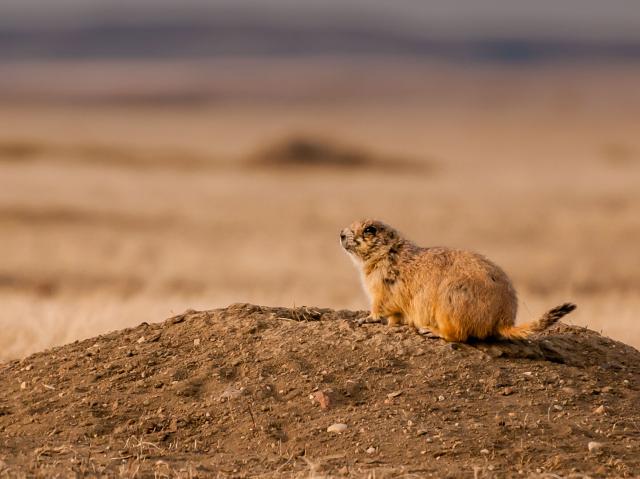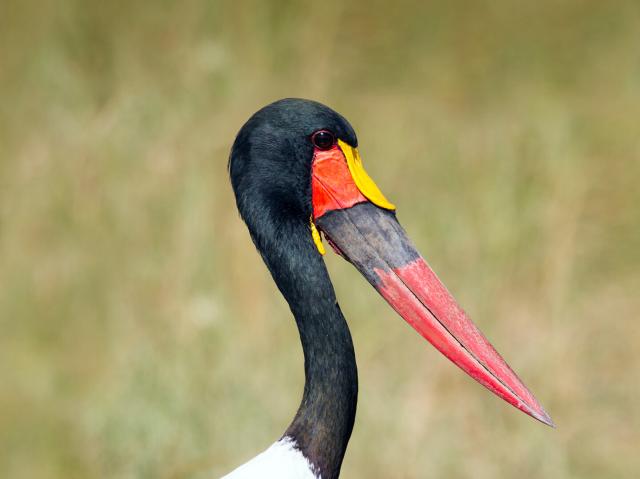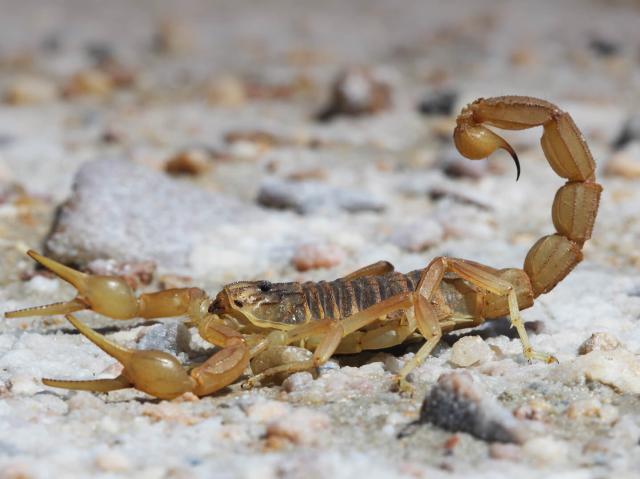
Toucan

- CLASS: Aves (Birds)
- ORDER: Piciformes
- FAMILY: Ramphastidae
- GENERA: 6
- SPECIES: 34

ABOUT
Cereal, anyone? Show any child a photo of a bird with an extraordinarily large beak, and they will tell you that it's a toucan! Perhaps the most well known tropical bird, the toucan is a symbol of playfulness and intelligence that has been used quite successfully by advertisers and business owners. There are several species of birds in the toucan family, some with names like aracari or toucanet, but they all sport that large, comical bill.
Why does the toucan have a bill that can be four times the size of its head and nearly as long as the rest of its body? Some say that the large and brightly colored bill is used to attract potential mates. Others suggest it is useful in scaring away predators or other wildlife that might compete with the toucan for food. Still others believe it is an adaptation that allows the toucan to reach food way out at the ends of branches that are not strong enough to hold the bird itself. Toucans are known to reach deep into tree cavities to grab eggs from other birds or to dig deeply into their own nesting cavities to clear them out, and pairs have been seen tossing fruit to one another in a courtship ritual. No matter what purpose you decide on, the toucan’s bill is a very useful tool!
Their famous bill is of light, but stout, construction and is hollow except for a network of bony fibers that run crisscross through the top for strength and support. It is made of keratin, the same thing our hair and fingernails are made of. Having such a lightweight bill allows the toucan to perch on the thinnest of branches to reach for the ripest of fruit!
The word “toucan” comes from the sound the bird makes. Their songs often resemble croaking frogs. Toucans combine their extensive vocal calls with tapping and clattering sounds from their bill. Many toucans make barking, croaking, and growling sounds, and mountain toucans make braying sounds like those of a donkey. Females generally have a higher voice than the males.
Although toucans and woodpeckers may not look like they have much in common, they are in the same taxonomic order (Piciformes) and have a lot in common. Like woodpeckers—and the parrots and macaws they share the forest with—toucans are zygodactylous, meaning they have two toes pointing forward and two pointing backward. This foot design provides strength and stability when moving through dense branches, up and down tree trunks, or in and out of tree cavities.
Both toucans and woodpeckers have a tongue that is long, narrow, and feather-like. Bristles along each side of the tongue help the birds catch and taste food before moving it down the throat. In addition, toucans and woodpeckers have short, stiff tail feathers, called rectrices, and nest in tree cavities. Both toucans and woodpeckers tend to be mostly shiny black, but they are decorated with bright whites, yellows, oranges, reds, and greens, depending on the species.
HABITAT AND DIET
How do they fit?! Toucans spend their lives high in the rainforest canopies of Central and South America; they seldom make trips to the forest floor. Home for the toucan is a nest in a hollowed-out tree cavity. It might seem odd that a bird with such a large bill would choose a small, enclosed space in which to nest, but the toucan has an interesting approach to getting comfortable. Once settled in its cozy nook, the toucan turns its head backward and settles its bill down upon its back, tucked under a wing. It then flips its tail straight up and over its head. Violà! A nice, tidy ball of feathers.
They are primarily frugivores and generally start their day with early morning visits to fruiting trees in their home area before making longer journeys in search of new fruit sites. Toucans are known to catch insects, dine on a tree frog or lizard, and even catch fish! They also steal eggs from other birds’ nests.
The large bill has serrated, or toothed, edges that help the bird catch, grasp, and even skin whatever it might be having for lunch. Once a full belly is achieved, toucans may playfully spar with each other while the fruit digests before returning to their home roosting tree for the night.
The toucans at the San Diego Zoo eat pellets made for softbills and parrots, a variety of fruit and vegetables, and crickets. Grapes and bananas are used for positive reinforcement when teaching the birds new behaviors for healthcare or enrichment.
FAMILY LIFE
Noisy and social, toucans travel in loose flocks of up to 22 individuals. Although most toucans live in groups, it is believed that they are monogamous, at least during the breeding season and while rearing young. Breeding occurs during the spring. Then, the female lays one to five shiny white eggs deep in a tree cavity; both the male and female incubate the eggs for 15 to 18 days.
The chicks hatch with closed eyes and bare skin, completely dependent on their parents for survival. By three weeks of age, their eyes open and feathers begin to appear. They stay in the nest for six to eight weeks, growing and developing the large bill they are known for before they fledge.
Life is not all fruit and play for toucans. Predators to watch out for include forest eagles, hawks, and owls; boas, jaguars, and margays often invade toucan nests. Their enormous bill is useless in defending against predators and, in fact, attracts humans to catch them for the pet trade. To protect themselves, they depend on their loud voices to scare off enemies and alert other toucans to the danger. They may also strike their bill against a branch in a defensive display.
CONSERVATION
The biggest threat to toucans right now is habitat loss. As the rainforests are being cut down to make way for roads, farms, and buildings, all of the wildlife that live there are losing their homes. The yellow-browed toucanet has a very small range in Peru. Coca growers have taken over its forest home, making this toucan the only one to be listed as endangered, but many others are becoming threatened.
Toucans are still hunted in parts of Central America and the Amazon region. Hunters often mimic toucan calls to draw the birds close. Many toucans are captured for the pet trade or for use as stuffed trophies to hang on a wall.
Sounds
LIFE SPAN
Up to 18 years in expert care; unknown in the wilderness
YOUNG
Number of eggs laid: 1 to 5, depending on species
Incubation period: 15 to 18 days
Age of maturity: 3 to 4 years
SIZE
Height: Largest - toco toucan Ramphastos toco, up to 24 inches (61 centimeters); smallest - tawny-tufted toucanet Selenidera nattereri, 12.5 inches (61 centimeters)
Weight: Heaviest - toco toucan, up to 1.9 pounds (860 grams); lightest - lettered aracari Pteroglossus inscriptus inscriptus, 3.4 ounces (95 grams)
FUN FACTS
While often compared to hornbills, toucans are close relatives of the woodpecker.
Mountain toucans live at much higher elevations than other toucans, up to 11,900 feet (3,600 meters) in the Andes Mountains.
Toucans are important for rainforest health and diversity. These birds pass seeds from the fruit they eat through their digestive systems, which helps replant the plants.










